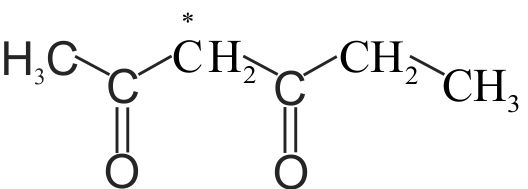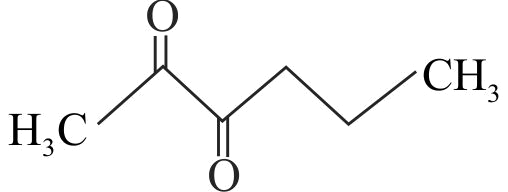317242
Consider the following three halides:
(A) \(\mathrm{CH}_{3}-\mathrm{CH}_{2}-\mathrm{Cl}\)
(B) \(\mathrm{CH}_{2}=\mathrm{CH}-\mathrm{Cl}\)
(C) \(\mathrm{C}_{6} \mathrm{H}_{5} \mathrm{CH}_{2} \mathrm{Cl}\)
Arrange \(\mathrm{C}-\mathrm{Cl}\) bond length of these compounds in decreasing order:
317242
Consider the following three halides:
(A) \(\mathrm{CH}_{3}-\mathrm{CH}_{2}-\mathrm{Cl}\)
(B) \(\mathrm{CH}_{2}=\mathrm{CH}-\mathrm{Cl}\)
(C) \(\mathrm{C}_{6} \mathrm{H}_{5} \mathrm{CH}_{2} \mathrm{Cl}\)
Arrange \(\mathrm{C}-\mathrm{Cl}\) bond length of these compounds in decreasing order:
317242
Consider the following three halides:
(A) \(\mathrm{CH}_{3}-\mathrm{CH}_{2}-\mathrm{Cl}\)
(B) \(\mathrm{CH}_{2}=\mathrm{CH}-\mathrm{Cl}\)
(C) \(\mathrm{C}_{6} \mathrm{H}_{5} \mathrm{CH}_{2} \mathrm{Cl}\)
Arrange \(\mathrm{C}-\mathrm{Cl}\) bond length of these compounds in decreasing order:
317242
Consider the following three halides:
(A) \(\mathrm{CH}_{3}-\mathrm{CH}_{2}-\mathrm{Cl}\)
(B) \(\mathrm{CH}_{2}=\mathrm{CH}-\mathrm{Cl}\)
(C) \(\mathrm{C}_{6} \mathrm{H}_{5} \mathrm{CH}_{2} \mathrm{Cl}\)
Arrange \(\mathrm{C}-\mathrm{Cl}\) bond length of these compounds in decreasing order:





.png)
.png)
